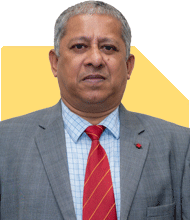Radheshyam Zanwar |3718 Answers |Ask -Follow
MHT-CET, IIT-JEE, NEET-UG Expert - Answered on Sep 06, 2024
Based in Aurangabad, Maharashtra, it provides coaching for Class 10 and Class 12 students as well.
Since the last 25 years, Radheshyam has been teaching mathematics to Class 11 and Class 12 students and coaching them for engineering and medical entrance examinations.
Radheshyam completed his civil engineering from the Government Engineering College in Aurangabad.... more

No worries sir, Can you also confirm if I will be able to avail the reservation obc-ncl for iit counselling?
If you are dissatisfied with the reply, please ask again without hesitation.
If satisfied, please like and follow me.
Thanks
Radheshyam
You may like to see similar questions and answers below
Radheshyam Zanwar |3718 Answers |Ask -Follow
MHT-CET, IIT-JEE, NEET-UG Expert - Answered on Sep 07, 2024
Prof Suvasish Mukhopadhyay |1545 Answers |Ask -Follow
Career Counsellor - Answered on Jun 23, 2025
Prof Suvasish Mukhopadhyay |1545 Answers |Ask -Follow
Career Counsellor - Answered on Jun 23, 2025
Prof Suvasish Mukhopadhyay |1545 Answers |Ask -Follow
Career Counsellor - Answered on Jun 23, 2025
Prof Suvasish Mukhopadhyay |1545 Answers |Ask -Follow
Career Counsellor - Answered on Jun 23, 2025
Prof Suvasish Mukhopadhyay |1545 Answers |Ask -Follow
Career Counsellor - Answered on Jun 23, 2025
Prof Suvasish Mukhopadhyay |1545 Answers |Ask -Follow
Career Counsellor - Answered on Jun 23, 2025
Prof Suvasish Mukhopadhyay |1545 Answers |Ask -Follow
Career Counsellor - Answered on Jun 23, 2025
Prof Suvasish Mukhopadhyay |1545 Answers |Ask -Follow
Career Counsellor - Answered on Jun 23, 2025
Prof Suvasish Mukhopadhyay |1545 Answers |Ask -Follow
Career Counsellor - Answered on Jun 23, 2025
Prof Suvasish Mukhopadhyay |1545 Answers |Ask -Follow
Career Counsellor - Answered on Jun 22, 2025














